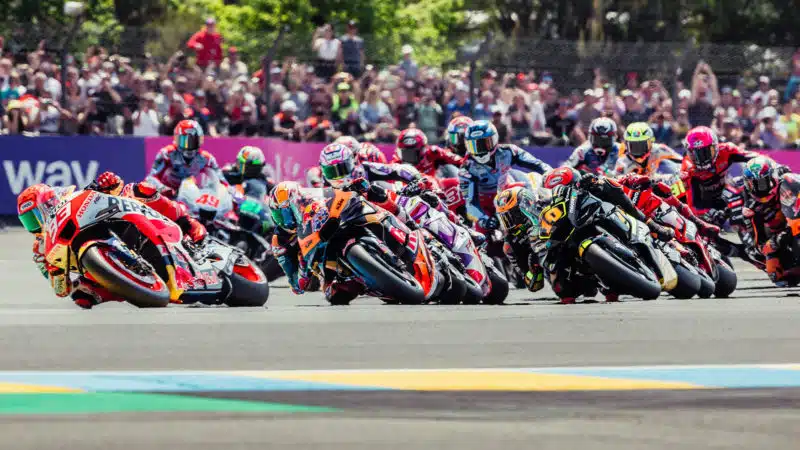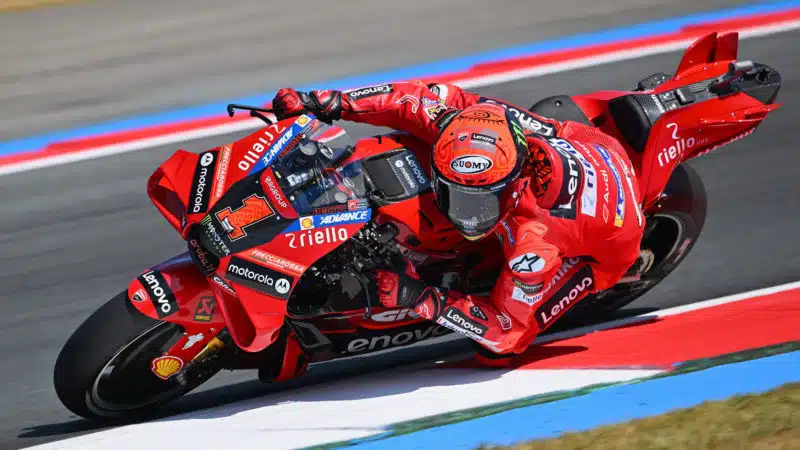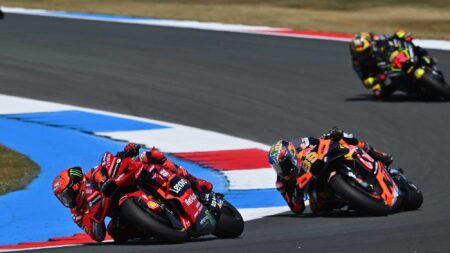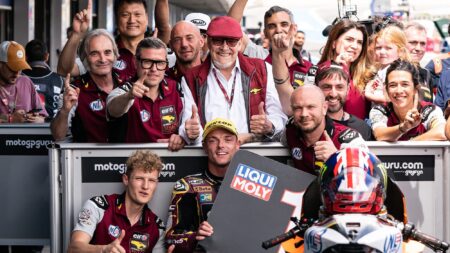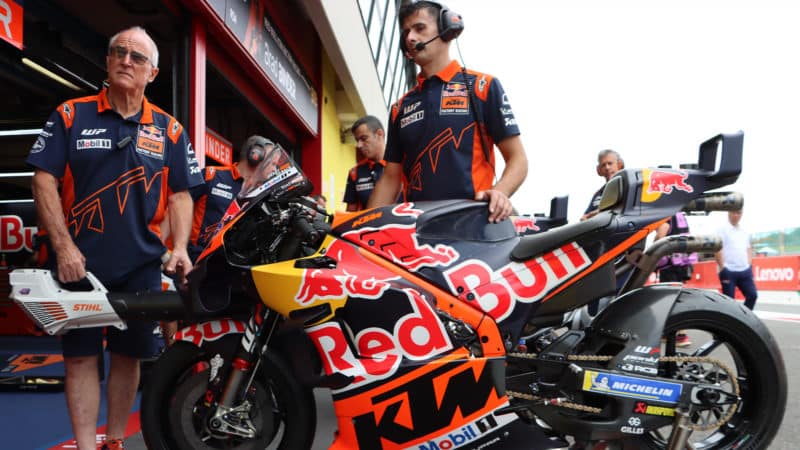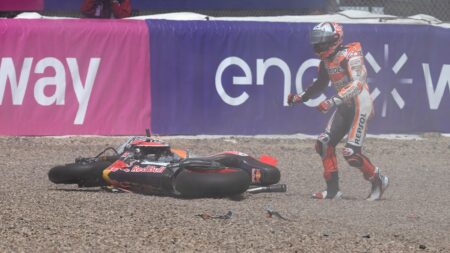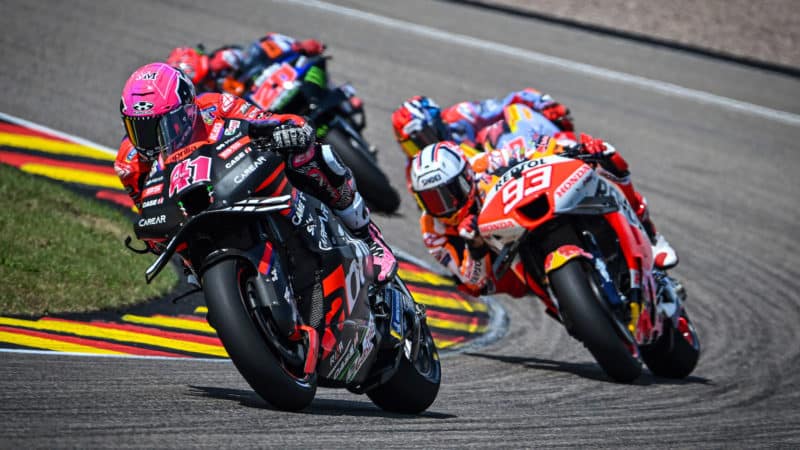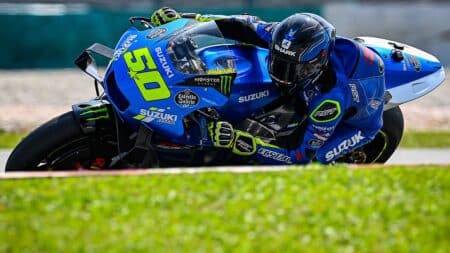Meanwhile Honda became GP racing’s superpower, dominating the 1960s, taking a decade out, then returning in the 1980s and rising to dominate again.
By the time Ducati unleashed its first Desmosedici MotoGP bike at Suzuka, Japan, in April 2003, Honda had won 191 premier-class GPs and 26 riders and constructors titles, while Ducati had won a big, fat nothing.
How times change. Since Honda’s captain (as Honda calls its six-times MotoGP king Marc Márquez) got hurt at the start of 2020 the company has won four GPs and zero titles, while Ducati has won 28 GPs, one riders’ crown and three constructors’ championships.
So far this season Ducati has won seven GPs and taken 11 further podiums, Honda has had one win (at COTA, a case of the RC213V fitting the track and Álex Rins loving the track) and no other GP podiums, while KTM and Aprilia have taken no wins and two podiums each and Yamaha has taken just one podium. That gives Ducati a 75% share of the podiums at the first eight races!
This is how the world works – no empire lasts forever.
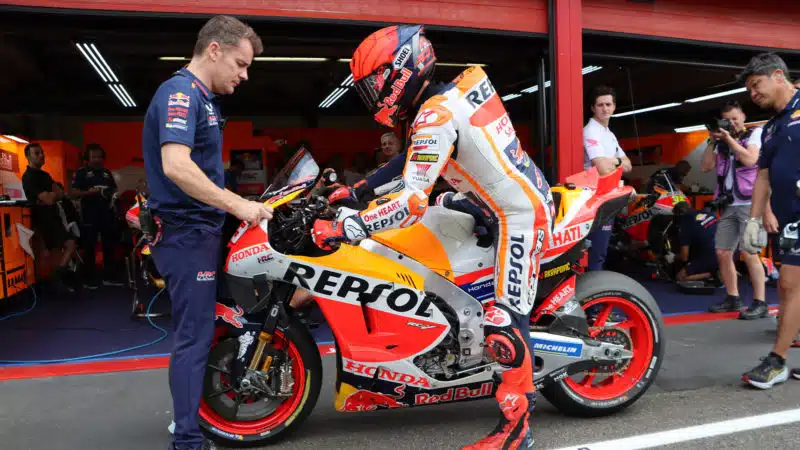
Márquez and the Kalex RC213V – the Kalex chassis is essentially a replica of HRC’s chassis, so it was never going to be a real answer to Honda’s problems
Oxley
In the ten years since Gigi Dall’Igna (Ducati’s 21st century Taglioni) arrived at Ducati the company has transformed itself from paddock joke – not a single victory in the 100 races between October 2010 and August 2016 – to MotoGP overlord. In effect, the Italian marque and the Japanese brand have traded places.
Why is Ducati’s Desmosedici so good now? Because Dall’Igna has worked like a Formula 1 engineer, delving deeper to find advantages than any MotoGP engineer before him. This process required venturing into areas which the rulebook never knew existed: downforce aerodynamics, hydraulic ride-height adjusters, mass dampers and so on.
